- Home
- Timothy Egan
The Good Rain: Across Time & Terrain in the Pacific Northwest Page 13
The Good Rain: Across Time & Terrain in the Pacific Northwest Read online
Page 13
I turn off the freeway and head west toward the Highlands, which is where Bill Boeing settled after he sold his interest in the company. Overlooking Puget Sound and secluded by natural boundaries, the Highlands is to Seattle what Beverly Hills is to Los Angeles. It’s much more understated and Northwestern, of course; this is a city where only lawyers, bankers and fresh-minted MBAs are consistent tie-wearers, and one in three residents belongs to the REI co-op. I pass the Tudor mansions and stone estates of old Seattle wealth, the descendants of timber barons who now live among some of the oldest and tallest trees left in the Puget Sound area, a long way from the ravaged stumpland of timber towns like Forks or Raymond. The homes are tasteful, devoid of ostentation, shadowed by the big firs. Each has its own stately view of the water, the islands, and the Olympics, an edge-of-the-world perch.
But, just as most of the big trees disappeared, these homes—this life—seem threatened, a feeling not limited to rich people in the Highlands. Stewart Holbrook, the writer of old tales about the young Northwest, described a feeling years ago that now is taken seriously by some. “Like many a native,” he said, “I am privately of the opinion that this entire region should be set aside as one great park before it is wholly overrun by foreign immigrants like me.”
A park it will not be. But a campaign essentially to freeze the region’s biggest city, to do for Seattle what President Franklin Roosevelt did for the Olympic Peninsula, is gaining steam, even as it runs into the historic impulse of each wave of new residents to inflate and shape the city to their own liking. The idea of forcing newcomers to check their expansion plans at the city’s door goes against the basic vision of the West—faster, bigger, better, the buzzwords of the American tomorrow. Seattle no longer wants to call itself New York–Alki, or even be compared to such a thing. After a century and a half of war, many in this city want to make peace with their surroundings while there is still enough of it left to bring them the good life prophesied by Winthrop. This sentiment has gone well beyond the sloganeering phase; taking the arcana of zoning laws into their own hands, Seattle citizens are set to vote on a measure that would cut construction of downtown skyscrapers by two-thirds. There is talk of banning cars from the central city, and keeping new houses from the last open spaces left in King County.
This movement began, in large part, with Emmett Watson, a newspaper columnist and author locally famous for founding Lesser Seattle, whose members commemorate month-long rain storms and civic failures with press releases to other cities. Watson is not a tree-hugger or backpacker; he chain-smokes unfiltered cigarettes, slurps black coffee ’round the clock, and walks with a half-step and hunched back. His constant companion is a runt poodle. Deaf in one ear, he briefly played semipro baseball for the Seattle Rainiers in 1942. When he was replaced on the roster, the coach was asked if the new player could hit. “I don’t know,” he answered. “But at least the son-of-a-bitch can hear.”
Tonight, in honor of Watson’s seventieth birthday, people from various backgrounds are crowded into the borrowed Highlands mansion to fete the founder of Lesser Seattle and talk up the promise of a restrained tomorrow. Off in one corner is Vasiliki Dwyer; she is with her husband, Federal Judge Bill Dwyer. I want to ask her about a certain mountain in the North Cascades, but I decide against bringing up Fred Beckey’s legacy. I’m drawn to another face, that of a man who is nearly one hundred years old: Dave Beck, the old lion. Once he was considered, next to the President, the most powerful man in America. Now he has the countenance of an infant, free of hair and teeth and the dead weight of responsibility.
For much of this century, nothing on wheels moved in Seattle without Beck’s permission. Later on, little in America moved without his permission. As president of the International Brotherhood of Teamsters during the height of its power in the 1950s, Beck was the lord of labor. Born in 1894, a time when Chief Sealth’s crease-faced daughter still prowled the streets looking for garbage to take back to her driftwood-framed shack, Beck is a living link between the mud village of New York–Alki and the overburdened megalopolis of today. His family came to Seattle in 1898, at the height of the Klondike goldrush, which enriched Seattle far more than it did the waves of argonauts who tramped through the snows of the Yukon. A brilliant publicity campaign convinced prospectors that they couldn’t set foot in Alaska, 1,300 miles to the north, without first dropping most of their savings on merchants in Seattle. In two years’ time, Seattle had more people than Los Angeles. In twenty years’ time, it grew six times over. In the West, only San Francisco was bigger. Seattle had grown so quickly from primitive milltown to a showy urban upstart that a writer from Harper’s Weekly remarked: “In the story of civilization, there is probably no record of more astonishing growth.”
Like other immigrants, Beck’s parents came to Seattle intending to board a ship for Alaska, but never got out of town. Beck himself was driving a laundry truck when Seattle was paralyzed by the only general strike ever to shut down an American city. Goldrush prosperity was followed by corruption so far-reaching that the police chief built and operated a five-hundred-room whorehouse with the full permission of the mayor. World War I heated up the timber, fishing and ship-building economy, all of which crashed following the Armistice. By 1919, the streets were swollen with newly unemployed shipyard workers, no-luck vets, three-fingered timbermen from the labor camps of the Industrial Workers of the World (the Wobblies), fruit pickers, foreigners fired up by the revolution then raging in Russia, and assorted hungry men from the sea and woods of the Northwest. There were several bloody riots between workers and company goons. Massacres made instant martyrs of Wobbly leaders. The city was ready to explode. A strike call, issued in sympathy for the shipyard workers, went out to the entire town, and on the morning of February 6, 1919, nothing moved in Seattle. In the labor paper, Anna Louise Strong, the onetime school board member and civic volunteer, wrote the words that would follow her to her grave in China, where she was an early supporter of Mao Zedong: “We are undertaking the most tremendous move ever made by labor in this country, a move which will lead—NO ONE KNOWS WHERE.” The strike ran out of steam precisely because it had nowhere to go.
Dave Beck, the laundry-truck driver taking his self-improvement courses at night, learned a valuable lesson. He proceeded to organize every trade and profession with more than a handful of members, and he disciplined their leaders. In time, there was seldom any reason to call a strike; Beck had such control that most labor disputes were settled with a phone call. Business leaders came to like Beck, an Elks Club member, a teetotaler, a man whose word was law. His absolute power was predictable, which made for a smooth economy. Together, they promoted Seattle. Growth was oxygen, and the city inhaled it in great gulps.
Within a generation of the general strike, Seattle was no longer a scruffy labor town, but a citadel of the middle class. Union stevedores spent the weekends at their cabins on Puget Sound, or took off the first week in September to go salmon-fishing, same as their bosses. As president of the international, Beck became a wealthy man; union funds were used to pay inflated prices for property that he had purchased. The man who had once been so poor he shot rats for a bounty bought himself a mansion overlooking Puget Sound, complete with swimming pool. Despite repeated attempts by federal prosecutors and Senate racketeering inquiries to get him, Beck held on until 1962, when he was sent to prison for income tax fraud. He did three years’ time at McNeil Island in Puget Sound, a prison term he said he found so restful that it added ten years to his life.
Now the growth crusades of Beck’s prime have given way to a broad campaign to prevent too many people from moving here. The credo of many at this party is found in the words of Edward Abbey, who wrote that growth for the sake of growth is the philosophy of the cancer cell. Each person who comes up to Watson tonight has some story to tell about confusing a tourist or obstructing plans for the latest housing development at the edge of town. I hear much talk about the unbearable traffic, the frozen lines of cars
on the Lake Washington bridges that connect Seattle to the generic neighborhoods spilling east to the mountains, and the forty thousand new people a year pouring into the Seattle metro area—a figure bandied about like the latest blood pressure reading of a terminally ill patient. An architect says too many of the new buildings look like Houston. Houston! And what about these Los Angeles drug gangs, the worst export of a town that has long been viewed as the Satan of cities? Unlike L.A., where residents don’t look twice at the most popular yard sign in many neighborhoods—WARNING: THIS HOUSE PROTECTED BY ARMED RESPONSE—Seattle has not made the effortless shift to a siege mentality. Still, control seems to have shifted; more than ever, power is with forces from outside of the city, coming this way—a force of urban magnetism.
There is a certain smugness to all this talk; wouldn’t Detroit or Cleveland or Buffalo or Denver like to have a little boom of its own? But beyond that, the growth angst has an edge because it goes to the very reason why people live in Seattle. Here in the corner attic of America, two hours’ drive from a rain forest, a desert, a foreign country, an empty island, a hidden fjord, a raging river, a glacier, and a volcano is a place where the inhabitants sense they can do no better, nor do they want to.
The rain has always been the secret weapon. Winter days can be so dark and dank that a flashlight is helpful on a midday stroll. For nine months out of the year meteorologists issue one basic forecast: rain turning to showers. Turning to showers? How can they tell? The clouds are seldom forceful and usually tentative. The volume is nothing unusual—less rain falls here than in any city on the East Coast—it’s the threat, the constant ambiguity in the sky, that drives people crazy. Now, however, with skin cancer and global warming, the sun is losing favor. On top of every other growth concern, even the Seattle drizzle has become fashionable, as good for the skin as a daily facial.
Watson gave the slow-things-down movement a name and a voice. As with many Seattle political trends, it started as a joke. While attending a luncheon of civic leaders who talked of further campaigns to expand the city—more industry, more people, more tourists—Watson squawked from the back of the room: “Who needs it?” Scorning formal organization and using his newspaper column as a bully pulpit, he commissioned anyone who shared his sympathies to become a “KBO agent.” During an interview on the Today show, Bryant Gumbel winced when Watson answered his question about what the initials stood for: Keep the Bastards Out.
A writer with an ear for the talk of many lives, Watson has spent a lifetime chronicling the odd characters of the new city on Puget Sound. His father was a basement digger, and Emmett remembers tagging along as he cleared the sliding glacial till for new home foundations. Later, he moved to a farm east of Seattle near Snoqualmie Falls. The Depression broke his father, the bank took his farm, and he moved back to the city and went on welfare. He died shortly thereafter.
When Emmett came of age, the regrades and earth-moving projects were done, and the city was starting to show signs of fulfilling the Winthrop prophecy. A fine public university was built on a hill facing Mount Rainier—a promenade from the center of campus seems to spill into the mountain’s north face, like the road to a glacial Oz—spread out over six hundred acres, accessible by water, and designed in Gothic style by a graduate of the Beaux-Arts school in Paris. Seattle attracted social tinkerers, lifestyle experimenters, political radicals. A Northwest style of architecture evolved, featuring windows big enough to allow the feel of winter storms, lots of unpainted wood, and clean trim lines in place of Victorian flourish. The subjects of native art—eagles and salmon and killer whales and wolves—and the muted colors of the sea and forest were evident in the work of many young artists. When Nellie Cornish arrived early in the twentieth century to found her school for the arts, she said the physical elements that surrounded the city would serve as the fount of a spirit and artistic style such as the country had never known. Eventually, Seattle became an important theater town. Ten professional stages provided Broadway and the West End with a steady source of original hits, although the directors of these theaters insisted they were creating original works for the people of the Northwest, not serving as a farm team for New York and London. When I asked Dan Sullivan, artistic director of the Seattle Repertory Theatre, why Seattle supports so much theatrical activity, he pointed to the drizzle outside his window. “The rain,” he said. “It makes you go into dark places to tell stories.”
Watson, who grew up listening to baseball games from distant ballparks, always thought he would move away to a real city. But he never left town. After baseball, he stumbled into the even cushier job of sports-writing, which led him to the better gossip tables in town and an expanded column format. He knew the bohemians and socialists, the Woody Guthrie crowd who sang until dawn at Lake Union houseboat parties; he followed Mark Tobey as he made a career painting the moods of the Pike Place Market; and when Ernest Hemingway passed his last day in Ketchum, Idaho, it was Watson who found out the death was a suicide and broke the news to the world. He helped the crusaders of the early 1960s as they campaigned to clean up Lake Washington, expand the region’s park system and launch a world’s fair that would leave the city with a landmark, the Space Needle, and a performing-arts complex.
Seattle was a place where a few citizens, not necessarily powerful but with access to a voice or a money source or a Senator, could change things. People moved here from the East or Midwest determined to do good, and in five years’ time they were part of the power structure (and five years later some of them were part of the problem). Long before there was an Environmental Protection Agency or a Clean Water Act, a young bond lawyer shamed the city into paying for a massive cleanup of Lake Washington. Freeways which threatened parks or the quiet of settled neighborhoods were stopped in midair construction (they became known as the ramps to nowhere). A forested park was created on a lid covering Interstate 5, and an aging industrial plant was transformed into a public playground and kite-flying mound. Unlike Los Angeles, a city set in a Mediterranean paradise which long ago lost its resiliency, Seattle tried to practice some self-restraint.
But then things started to change. National magazines, beginning with Harper’s in the mid-1970s, declared Seattle the most livable city in America. In the 1980s, Rand McNally rated the city the number-one vacation destination in the country, and Savvy magazine said it was the best place for women to live. Sports Illustrated pronounced Seattle a haven for the urban outdoorsman. The television news magazine 60 Minutes said Seattle was the best place in the country to have a heart attack because the emergency medical response was so good. Trade periodicals wrote that the average Seattle resident read more books, attended more movies and purchased more sunglasses (lost between solar appearances) than people in other cities. Esquire weighed in with a story on the Seattle lifestyle—“a major subculture of lawyers-turned-carpenters” and “some significant going home at four-thirty,” and “on a famous ferry going into famous Seattle, dusk on a November night, the sky, the water, the mountains are all the same color: lead in a closet. Suicide weather. The only thing wrong with this picture is that you feel so happy.”
All of this was acid in the face of Lesser Seattle. With each accolade came strangers who wanted a piece of Seattle and wanted it now, with some alteration. It was a curse, this Most Livable City tag, the revenge of Chief Sealth, coming at a time when the Northwest, like the rest of North America, was giving up its farms and becoming a continent of urbanites. Two-thirds of Oregonians now live within a hundred miles of Portland; seventy percent of Washington’s population lives in the Puget Sound basin, and half of British Columbia’s residents crowd the area around Vancouver. In Seattle, growth begat gridlock, drug wars and office buildings that broke through the ceiling of the cloud cover but greeted pedestrians like a basement wall. The Scandinavian business tradition which helped Nordstrom go from a single shoe store on Pike Street to the largest clothing retailer in the nation gave way to bigger money from the outside and bottom-line
executives who couldn’t give a damn about the water purity of Lake Washington or how some season-ticket holder felt about “his” Seahawks. To the old motivation of greed was added a new reason for the changing cityscape: ego. Martin Selig, a diminutive developer who owns a third of all the office space in the city, remade the skyline faster than a troop of volunteers had done just after the Great Fire of 1889. He reached the zoning code zenith with the seventy-six-story Columbia Center, the tallest building on the West Coast when completed in 1981. Paul Schell, who came to Seattle from Iowa, took a look at the Columbia Center and said, “If Martin Selig had been six-foot-five instead of five-foot-six, that building would be only half as big.”
In the midst of Seattle’s growing pains, Watson went to Switzerland to visit Mark Tobey during the painter’s final years. Long after he left the country, Tobey continued to draw upon Seattle as the source of his inspiration: the sky could make four different faces in an hour; the wind jumped off the water and tumbled through the streets; anywhere you looked, from a hilltop neighborhood to a waterfront dock, at any time, the curtains might open and a mountain range would appear. If those peaks had been in hiding for a few weeks of winter, they looked new. Tobey was crushed by the march of the megalopolis toward the Cascades and the wave of generic skyscrapers downtown. Overnight, cities were shaking off their past and repackaging themselves in a single uniform. Seattle in the late twentieth century, once again ignoring the natural blueprint of its setting, was going the same way. “Landmarks with human dimensions are being torn down to be replaced by structures that appear never to have been touched by human hands,” said Tobey.

 The Immortal Irishman
The Immortal Irishman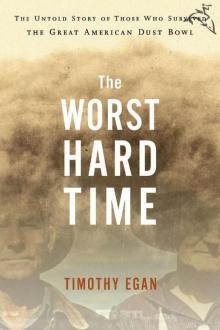 The Worst Hard Time: The Untold Story of Those Who Survived the Great American Dust Bowl
The Worst Hard Time: The Untold Story of Those Who Survived the Great American Dust Bowl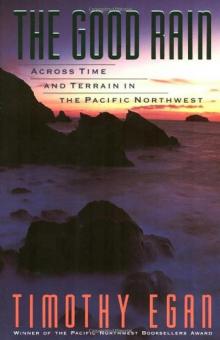 The Good Rain: Across Time & Terrain in the Pacific Northwest
The Good Rain: Across Time & Terrain in the Pacific Northwest Breaking Blue
Breaking Blue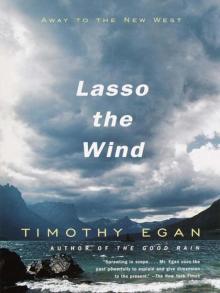 Lasso the Wind: Away to the New West
Lasso the Wind: Away to the New West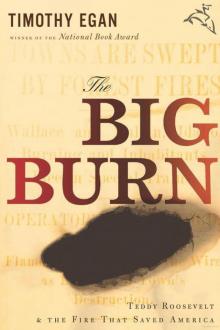 The Big Burn: Teddy Roosevelt and the Fire That Saved America
The Big Burn: Teddy Roosevelt and the Fire That Saved America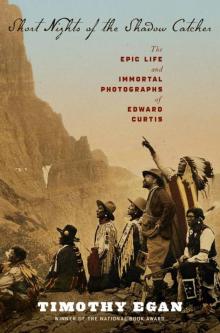 Short Nights of the Shadow Catcher
Short Nights of the Shadow Catcher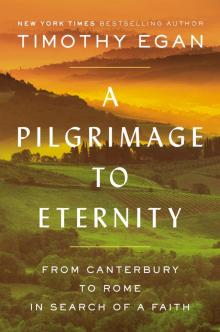 A Pilgrimage to Eternity
A Pilgrimage to Eternity The Worst Hard Time
The Worst Hard Time The Big Burn
The Big Burn